Plant color in the garden is never just about flowers. Other plant features such as stems, berries and seed pods also give us an amazing diversity of color, but most of all it's about foliage.
Foliage is often overlooked — always in the chorus line but never the soloist. We use it as a foil to flowers or just as a background to borders. But for once, let's bring the foliage plants to the fore and look at how using foliage alone can create a green tapestry.
Foliage plants have lots of advantages: They are not as seasonal as flowering plants and are generally low maintenance, and many make superb ground cover. Above all they come in a huge range of shapes, sizes and colors.
Get ideas from examples of planting schemes that don't focus on flowers.
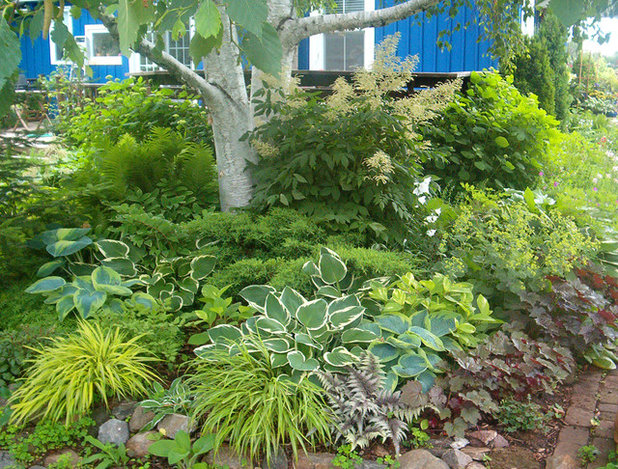
Flowers in the Front Yard
A tapestry of green. This wonderful shade planting scheme shows us just how foliage alone can give us a great amount of color, creating a green tapestry.
The shapes and color of leaves provide much interest. In fact, the shapes of leaves can almost be as varied as the shapes of flowers. While foliage is seldom bright (there are colorful exceptions, of course), it can create a satisfying and sustaining landscape.
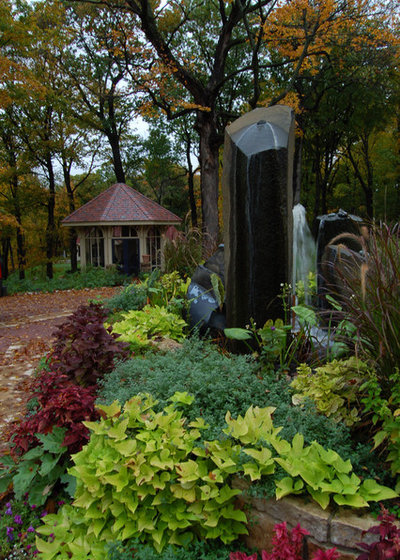
Topo
Brilliant color. Few plants have such brilliant foliage color as the
Coleus blumei shown in this border. For those in temperate climes, they are generally used as a seasonal bedding or accent plant, grown from seed each spring or overwintered as plants in a greenhouse.
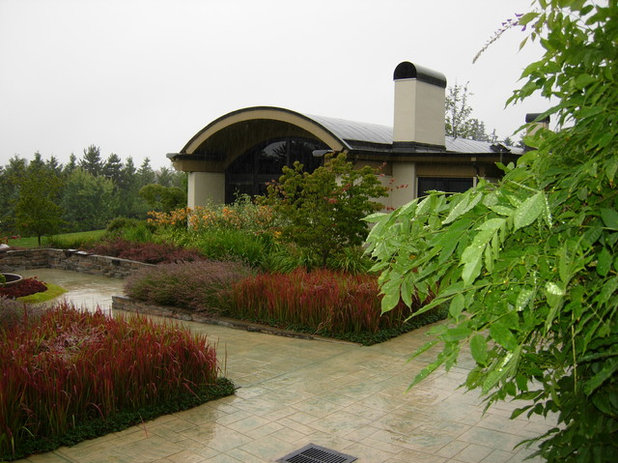
Jamie Van De Vanter
If the upkeep of Coleus sounds like too much trouble, a good replacement is the spectacular grass
Imperata cylindrica 'Red Baron'. Planted here in blocks, they really are breathtaking. It's not the easiest to grow, needing full sun in a moist soil. Strangely, the color starts at the tips of the shoots in spring and gradually suffuses through the plant.
It is worth remembering that leaves change not only with the seasons, but also with their stages of growth. Some look better when young, while others reach their climax at leaf fall.
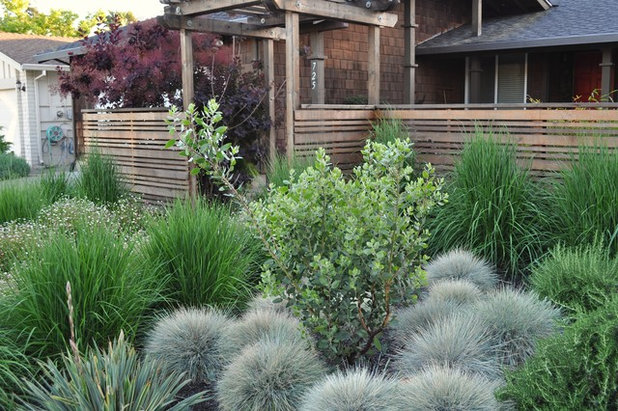
Huettl Landscape Architecture
Subtle palettes. Here we can see how a more subtle planting of glaucous green gives us a restful picture. Notice how the choice of plants has been limited to prevent the border from becoming too busy — something that is so important when using foliage plants in smaller spaces.
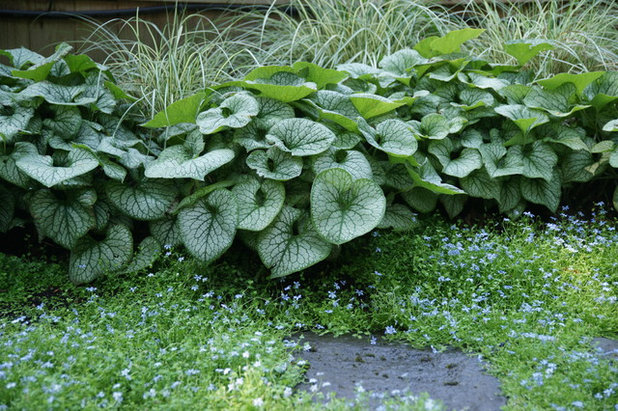
Creative Garden Spaces
Perennial plants can also provide us with more subtle planting. Brunnera is a great plant for moist, shady situations. Its large heart-shape leaves make a good ground cover, and though it has delicate sprays of flowers similar to forget-me-nots, the foliage is the real winner.
This variety is
Brunnera macrophylla 'Silver Wings', whose variegated leaves seem to have an almost silver overlay. Here they contrast against spiky grasses for a tropical effect.
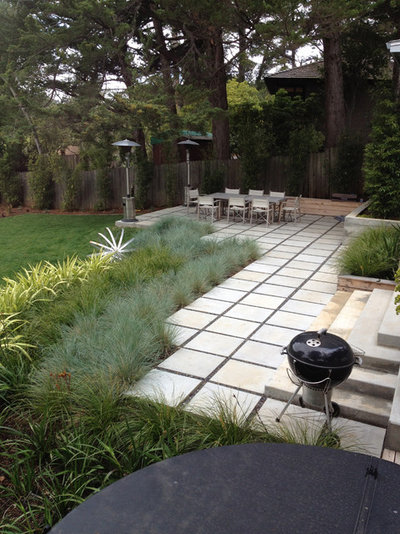
Costello Kennedy Landscape Architecture
Low maintenance. The use of foliage alone in planting schemes has been widely adopted in contemporary garden designs. The main benefits are the low maintenance required for year-round-color evergreens.
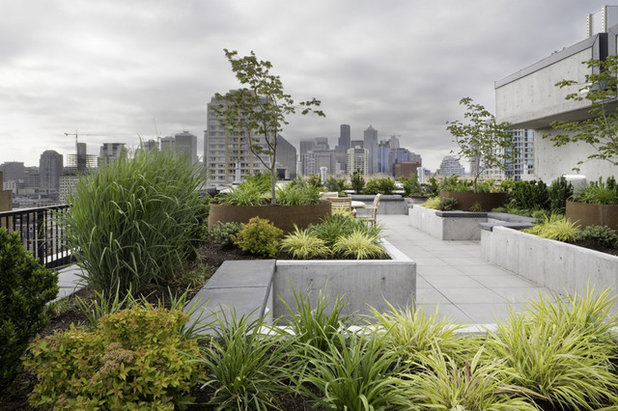
Kenneth Philp Landscape Architects
Contemporary style. Contemporary planting is again shown at its best with this roof garden. The precise planting shows us how restrictive and repetitive planting works best. Most leaves have differing colors on their upper and lower surfaces, perhaps green on top and gray beneath, so gardens prone to wind will get the benefit of an ever-changing kaleidoscope of colors.
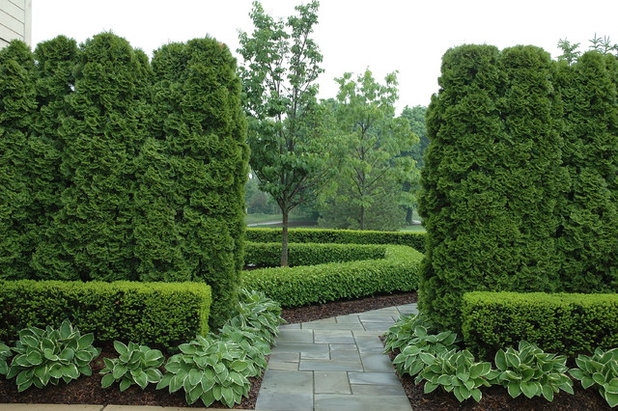
Land Architects, Inc.
Lasting color. One of the most obvious attributes of the average leaf is that it is with us for a lot longer than the flower. This is truest of the evergreens, whose leaves remain on the plant from one to three years.
Three layers of foliage present us here with a wall of greens — from the emerald green of the
Thuja occidentalis through the
golden young foliage of the trimmed Buxus to the shieldlike leaves of the variegated Hostas.
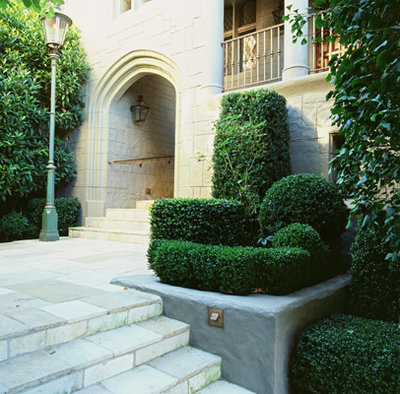
Blasen Landscape Architecture
Shadow effects. The foliage of these tightly clipped Buxus plants is made more impressive by the shadows they cast against one another and on the wall of the building behind. Shadows can be an almost fourth dimension, so it's worth thinking about when designing your planting schemes. The shadows also bring out the texture of the foliage — especially on plants with small leaves.
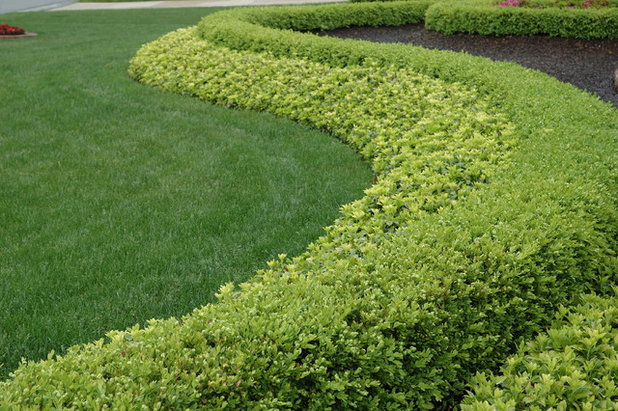
Land Architects, Inc.
Subtle contrast. The amazing sweep of
Pachysandra terminalis and Buxus in this garden shows us why the sole use of foliage plants can be so dramatic. Though both plants will flower, the whole emphasis of the design is the wonderful contrast of subtle leaf color and texture.
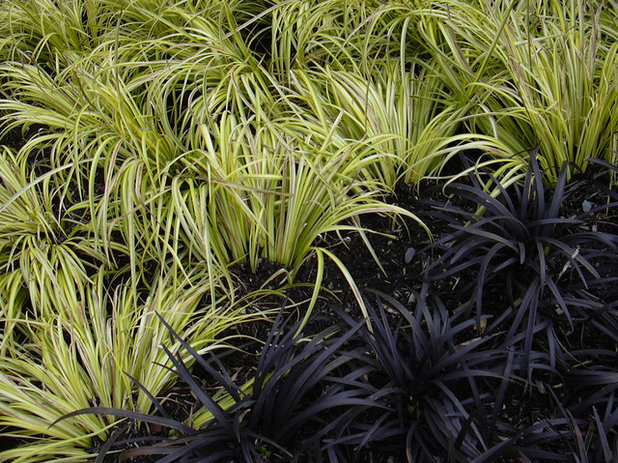 Bolder statements.
Bolder statements. Other foliage contrasts need not be so subtle. The juxtaposition of the black grass
Ophiopogon planiscapus ‘Nigrescens’ against a golden sweet flag (
Acorus gramineus ‘Ogon’) makes a real statement. Try being bolder with plant selection, contrasting plants of differing color, texture and leaf size and shape.
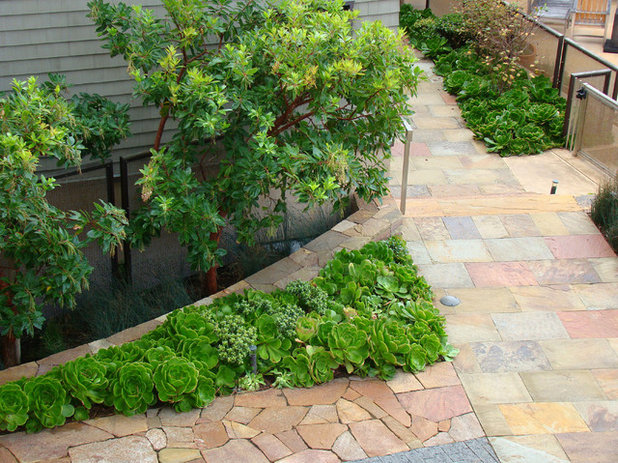
Randy Thueme Design Inc. - Landscape Architecture
Mass planting. I really love the use of these succulents. The shiny surface of the foliage brings yet another dimension to this evergreen planting. With just one species we can see the intricate differences in foliage color from deep cabbage green to the delicious pink-tinged edging.
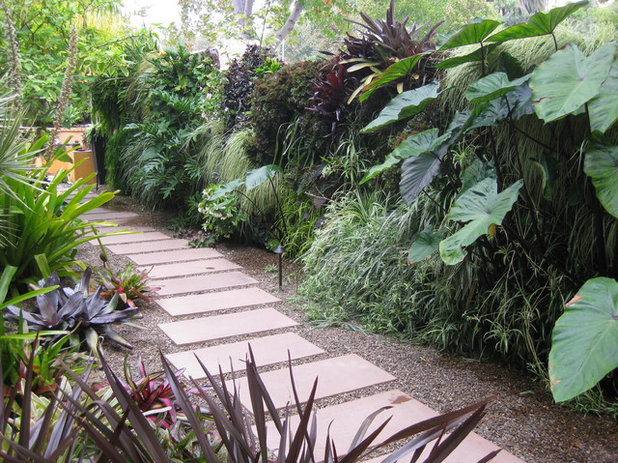
Amelia B. Lima & Associates
Perhaps this green wall is the true green tapestry. The creation of this wonderful vertical jungle shows us how the foliage available to gardeners is so diverse — and how when we see it used in this fashion we may see we really don't need so many flowers.
More:Garden Design Essentials: Texture
11 Inspiring Vertical Gardens





